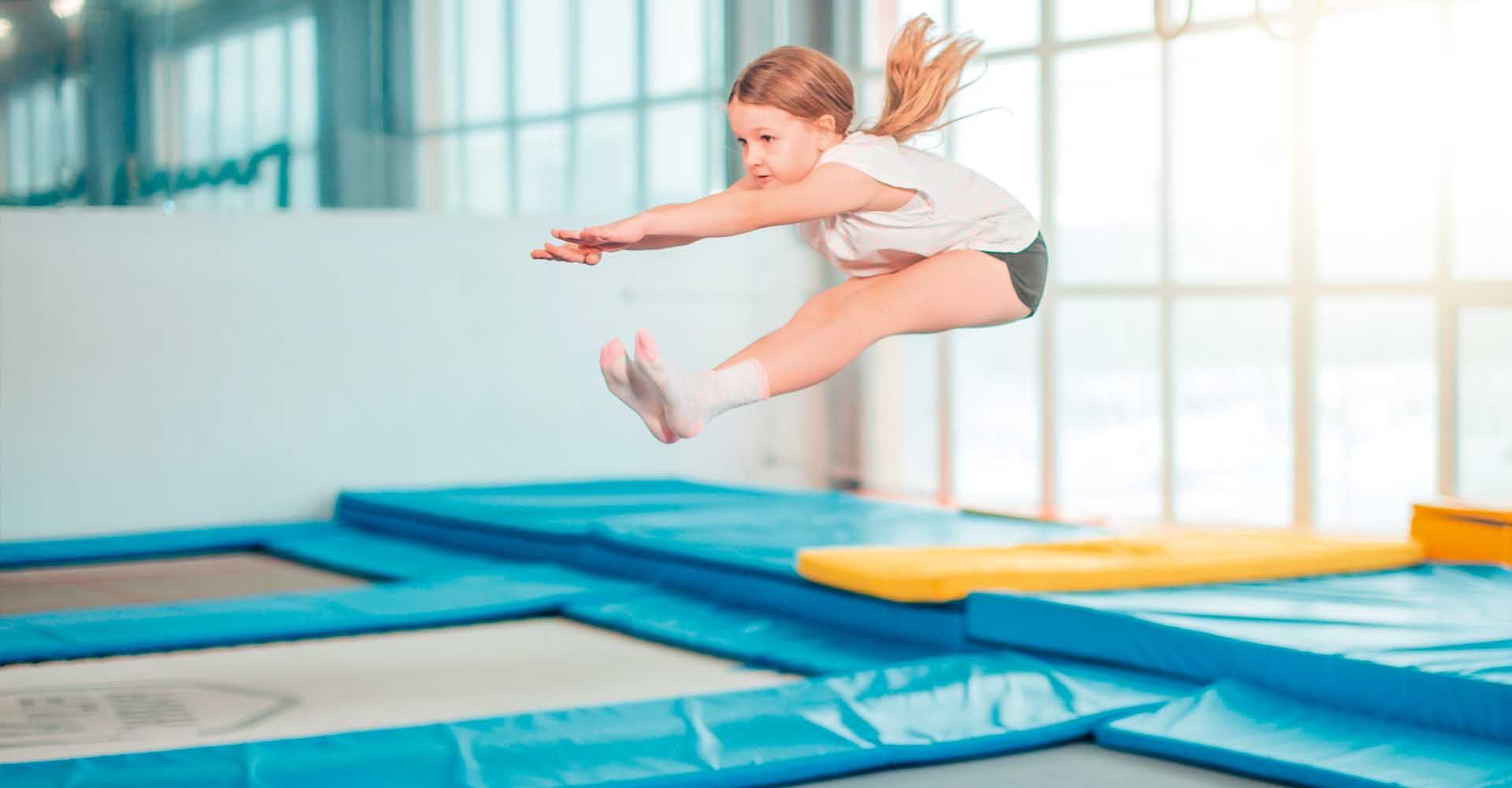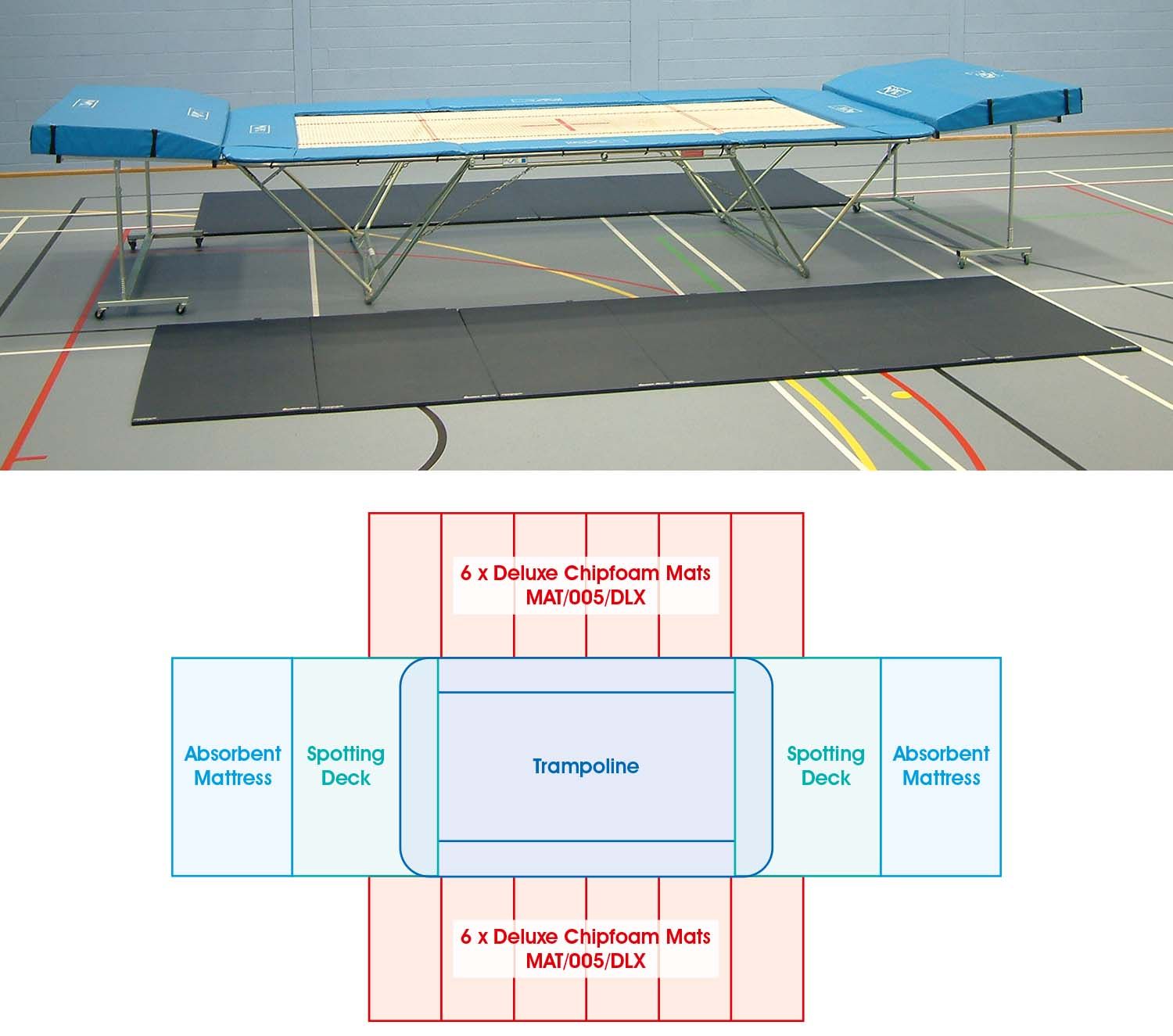
Universal Services has been providing schools and sports hall operators with high quality indoor trampolines for more than 30 years.
These products are a challenging and engaging addition to any sports environment – but they must be assembled, maintained, and supervised correctly in order to try and keep students and staff safe.
In this guide, we will provide you with additional information you should consider when purchasing, installing, and making good use of your new equipment at your premises.
Naturally, one of the biggest considerations here is utilising the space that’s available to you, without compromising on safety by placing the product in an area that is not suitable, e.g. cluttered, obstructed, or with limited access.
You will also need to think about who will be using your trampolines. Our GM schools and club trampolines are perfect for schools, universities, clubs and leisure centres; our M school trampolines are particularly well suited to schools; and, as their name suggests, our GMEX competition models are designed and built to international competition standards.
If you would like further advice on finding the right trampoline, contact us today. We will happily talk you through your options and introduce you to the most suitable product(s) in our range.
The below diagram illustrates how to set up a single trampoline in a sports hall setting, with the equipment required to ensure the setup is in line with the AfPE Safe Practice in Physical Education, School Sport and Physical Activity 2020 publication.

Please note that a member of staff with a Qualified Teacher Status (QTS) must be present in order to operate your trampolines and oversee their use.
This individual must ideally be trained to Level 2 standard. They should have undertaken and completed a suitable course that demonstrates their capability to teach trampolining in a school or recreational environment, as this is classed as a high-risk activity. Please visit the British Gymnastics website for a full list of approved courses. Refresher training is also recommended every 3 to 5 years.
As per the AfPE Safe Practice in Physical Education, School Sport and Physical Activity 2020 publication, when setting up a trampoline, staff should refer to manufacturer’s instructions and ensure that:

In addition to the appropriate safety equipment, each trampoline should have one or two spotters at each side of the trampoline, and one at each end.
Spotters are physically fit, fully trained individuals who are placed by each trampoline to assist if trampolinists fall off the product. Even though most injuries occur on the bed of the trampoline due to poor landing techniques and awkward rebounds, accidents do happen – and it’s important that someone (or a group of people) are present to help, if they need to.
Spotters should watch trampolinists at all times and take steps to push them back into play or soften their landing if they do stray outside of the bed. Where it is appropriate to do so, they should aim to reach for the chest or shoulders of the trampolinist to slow them down and help minimise the impact of their landing.
Remember, spotters should never be used in place of following the appropriate trampolining safety guidelines. You can find more information on the use of both approaches in a safe trampoline setup in the AfPE Safe Practice in Physical Education, School Sport and Physical Activity 2020 publication and British Gymnastics Trampoline code of practice.
Staff should be able to scan the room in order to safely supervise a number of trampolines at the same time. Depending on the number of trampolines and qualified teachers available, it may be best to carry out trampolining activities in smaller groups. Safe practice is compromised where one teacher supervises half the class working on the trampolines as well as the other half doing a different activity – for example, in a multi-use sports space.
RELATED ARTICLES - buying guides
Published on 31 January 2023 By Andreas Fantousi
CALL THE SALES TEAM ON +44 (0)1621 868 700
Or send your enquiry